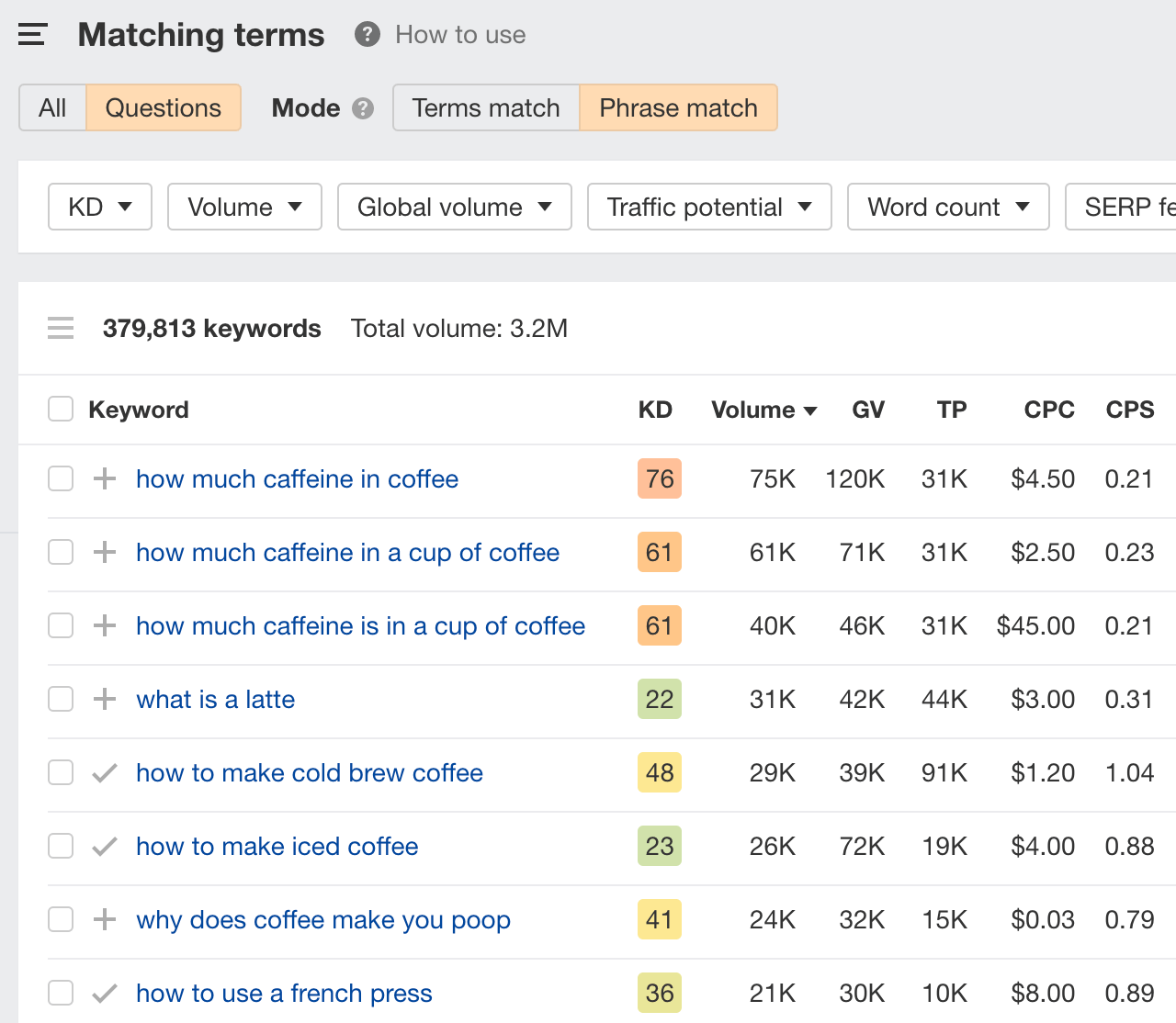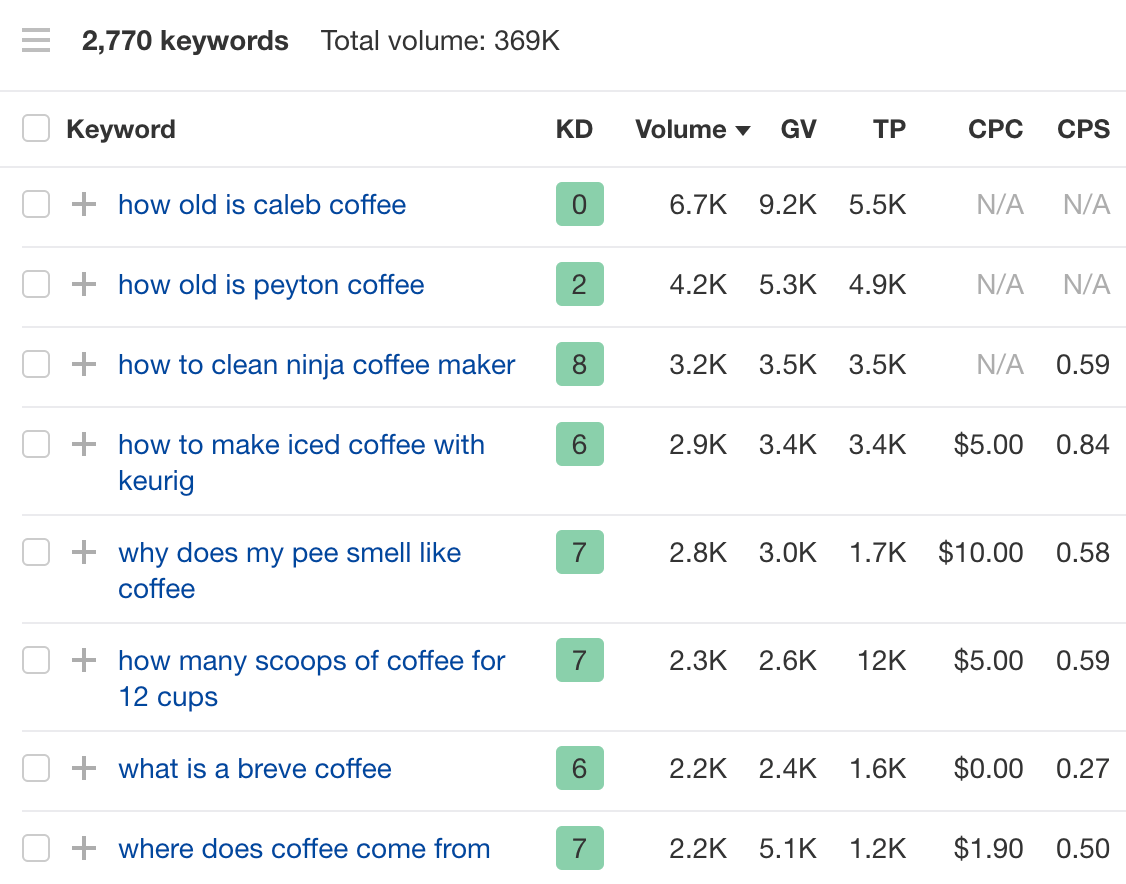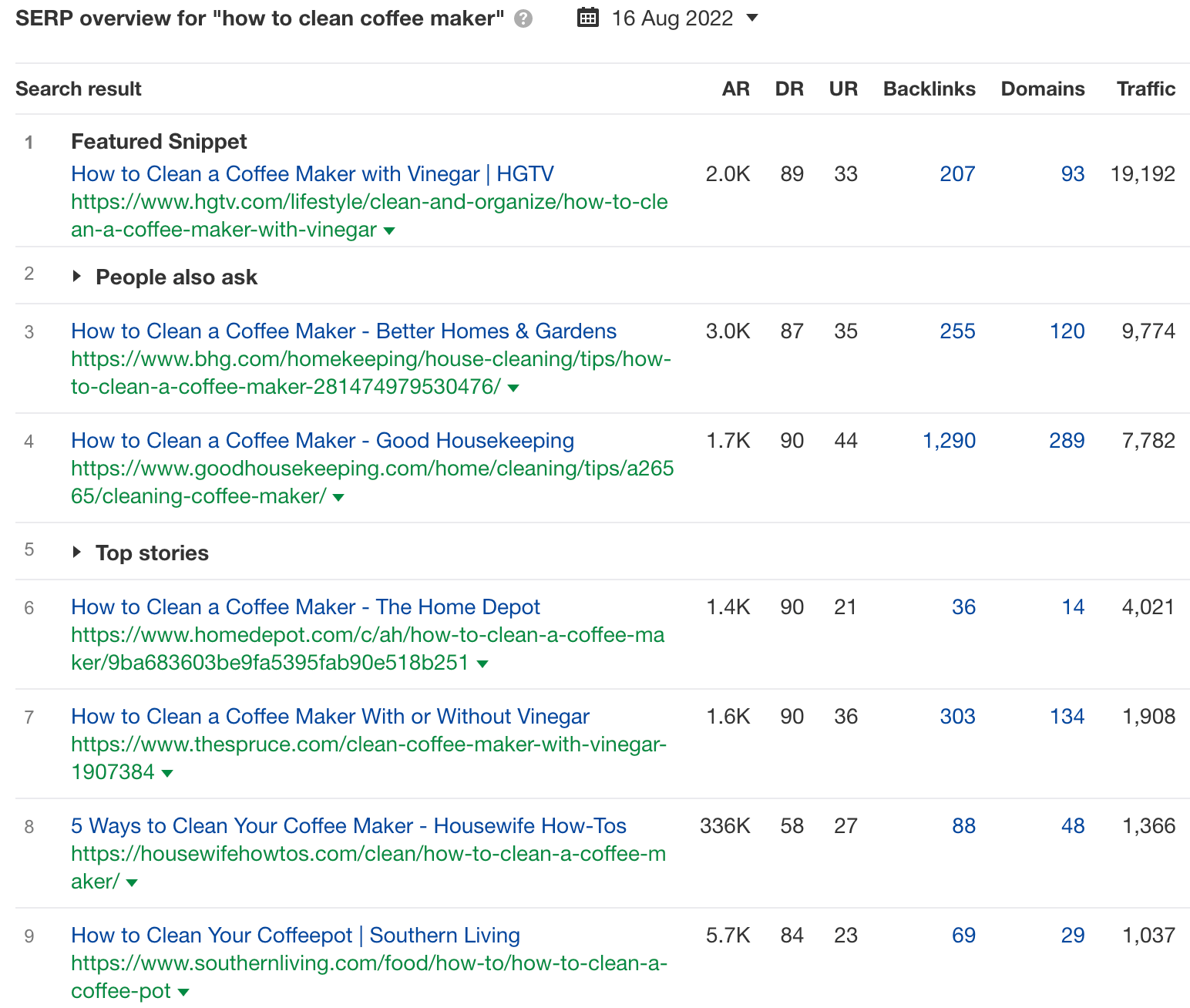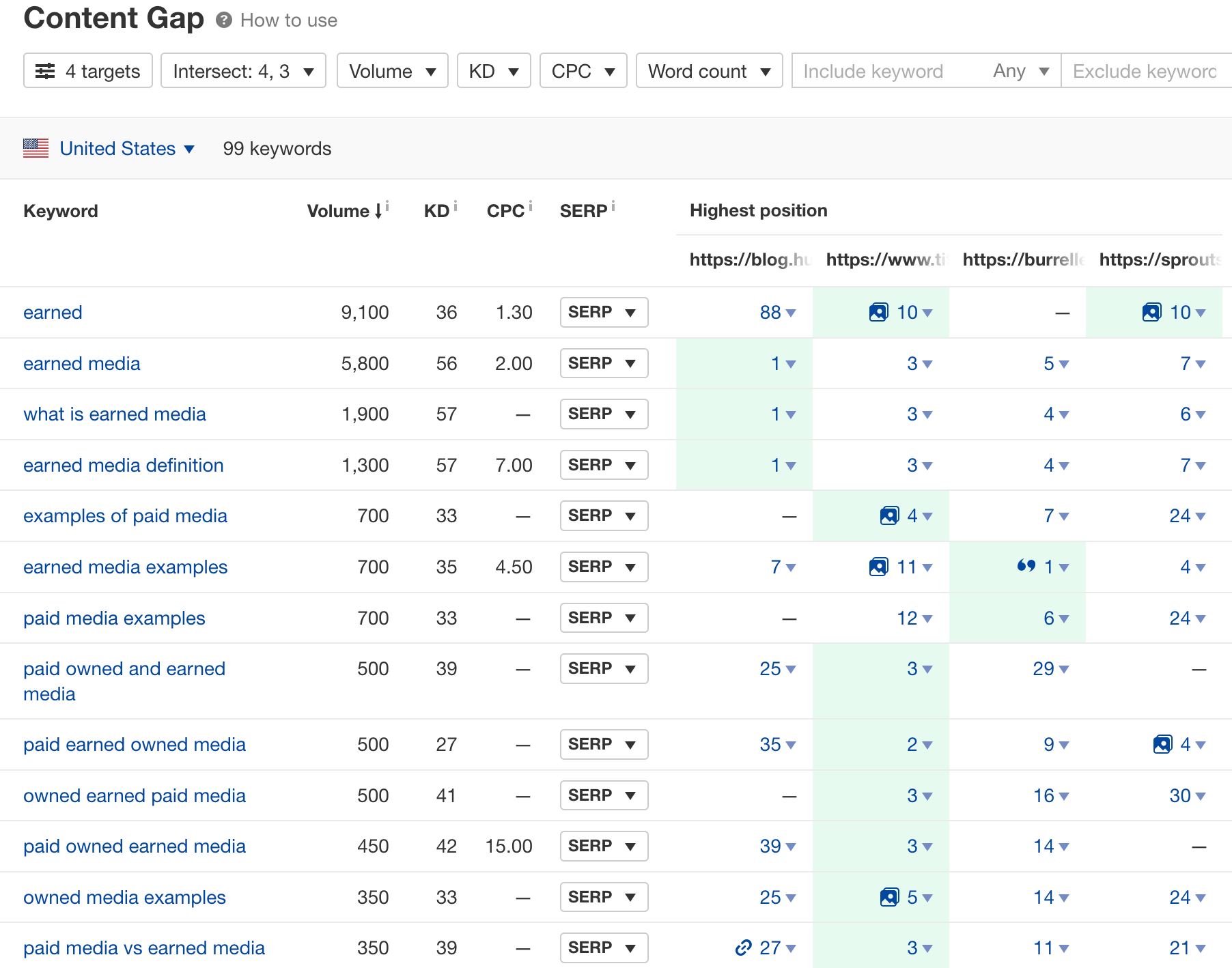You’ve almost certainly heard a lot about the importance of targeting keywords together with your blog posts.
But why in the event you do that? And how exactly do you target keywords?
You’ll learn how on this post.
Why target keywords?
If your content ranks high on Google, you may get traffic consistently over the years.
for instance, we published this post on advanced Google search operators in 2018. To this date, we’re still getting tons of organic traffic:
But you can’t just publish any random post and expect search traffic to come back your way. To get consistent organic traffic, it's important to write about topics that folks are looking for.
this is the reason you ought to be targeting keywords with your blog posts.
How to focus on keywords with blog posts
You now know why it’s necessary to target keywords. But how exactly do you “target” them?
Here’s how.
1. Find keyword ideas
the method begins by working out what keywords you ought to target. We’re no longer just on the lookout for any random keywords—we’re searching for relevant keywords that folks are in search of.
the easiest way to do that is to use a keyword tool. Keyword tools are databases of words and phrases with their search engine optimization metrics. They show you a list of ideas in line with the seed keyword idea you’ve entered.
you should use any keyword research tool. Many of them are free. Alternatively, many of the free keyword tools are limited in some way—they may have a small database, have poor or no filters, lack search engine optimization metrics, and more.
that may make it difficult to make good decisions.
So we propose that you simply use a “professional” keyword tool like Ahrefs’ Keywords Explorer. Here’s how to use the tool to search out keyword ideas:
- Enter one (or a few) relevant seed keywords, e.g., try plugging keywords like “coffee,” “latte,” “french press,” etc., when you have a coffee blog
- Go to the Matching terms report
- Switch the tab to Questions
You’ll see that there are over 300,000 potential keywords it is advisable to target. That’s too many—and most of them are most likely too competitive. If you’re just starting out, it’s better to target keywords that are:
- High in Traffic Potential (TP) – TP is the estimated amount of search traffic you'll be able to potentially gain in the event you rank no 1 for that topic. We calculate it by estimating the amount of search traffic the number one page currently gets.
- Low in Keyword Difficulty (KD) – KD is how difficult it is to rank for the keyword in the top 10 organic search results.
Use the available filters to reduce the list down:
From here, you'll look through the list and pick out the ones keywords which can be relevant for your website online.
advisable reading: Keyword Research: The Beginner’s Guide by Ahrefs
2. Identify search intent
Google’s aim is to rank the most relevant content for any query. As such, it tries to understand why a searcher is Googling that keyword so it will possibly serve the most relevant results.
that implies, with a view to rank high on Google, we need to spot and match search intent. Fortunately, we will do this by looking at the current top-ranking pages to your target question. Specifically, we wish to spot the three Cs of search intent:
- Content type – The dominant type of content on the SERPs—in this example, blog posts.
- Content format – The dominant content format, such as guides, listicles, reviews, and more.
- Content angle – The dominant angle. Examples include the current year, for beginners, simple and easy, and more.
for example, let’s take a look at the top-ranking pages for the keyword “how to clean coffee maker”:
- Content type – They’re all blog posts.
- Content format – Most of them are how-to guides.
- Content angle – It looks as if a few of them mentioned “with vinegar.” It could be a potential angle you need to go for.
If you’re targeting this keyword, as an example, it’s likely you’ll have to create a how-to guide on cleaning a coffee maker (perhaps with vinegar!).
advisable reading: What Is Search Intent? An entire Guide for Beginners
3. Create the content
Targeting keywords with blog posts is not about stuffing as many keywords as conceivable. That’s an ancient tactic that no longer works. If you wish to rank high on Google, you need to show Google that your content is relevant and deserves to be on the first page.
By matching search intent, you’ve already cleared the first hurdle. But how else can you show Google your content deserves to be there?
Here’s how:
A. Cover important subtopics
If there are subtopics that the majority the top-ranking pages cover, then it’s a sign that searchers are looking for them.
Here’s how to define these subtopics:
- Paste a few top-ranking URLs for your main topic into Ahrefs’ Content Gap tool
- Leave the ground section blank
- Hit Show keywords
- Set the Intersection filter to 3 and 4 targets
we will see that the top-ranking pages cover topics like these:
- What is earned media
- Earned media examples
- Owned media examples
- Paid media examples
- Paid media vs earned media
- Owned media vs earned media
And more.
If we’re covering this topic (“earned media”), it's likely we’ll have to hide these subtopics too. Even better: you should use them as potential H2s to organize your content.
B. Invest in a good reader enjoy
you want to make sure that your content is easy to read. Finally, the aim of your blog post isn't just to rank but also to get the reader to consume your content.
Follow these tips to create an effortless reading experience:
- Use descriptive subheadings (H2–H6) for hierarchy
- Use bullets to assist with skimming
- Use images and GIFs (where needed) to get a divorce the text
- Use short sentences and paragraphs to circumvent “walls of text”
- Use simple words that everybody can understand
- Write as you speak to make things conversational
- Read your copy out loud (when editing) to smooth the go with the flow
C. Don’t disregard your on-page search engine marketing
Your on-page search engine optimization is the “icing” on the cake that helps make it doubly clear to Google and searchers that your page is relevant.
Here are the basics:
- Use the keyword in the title (if possible) – Google confirmed the significance of headings in 2020. If it’s difficult, don’t shoehorn the keyword—use a close variation as a substitute.
- Use short, descriptive URLs – A descriptive URL, in most cases the keyword, helps searchers understand what a page is about before clicking.
- Write a compelling meta description – It’s not a ranking factor, but it surely further helps entice searchers to click for your result.
- Use descriptive alt text – This helps Google understand images better.
- Link to relevant internal and external resources – Linking to relevant internal and external resources helps visitors navigate your website and find more information.







0 Comments